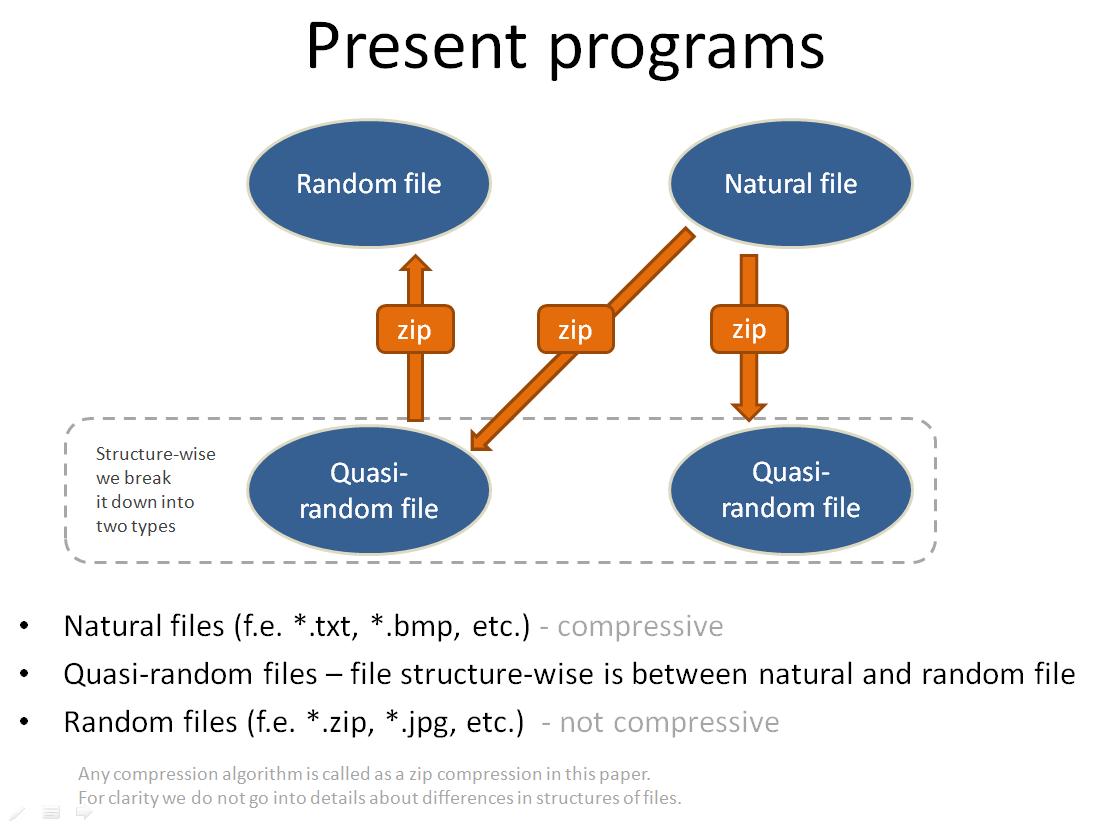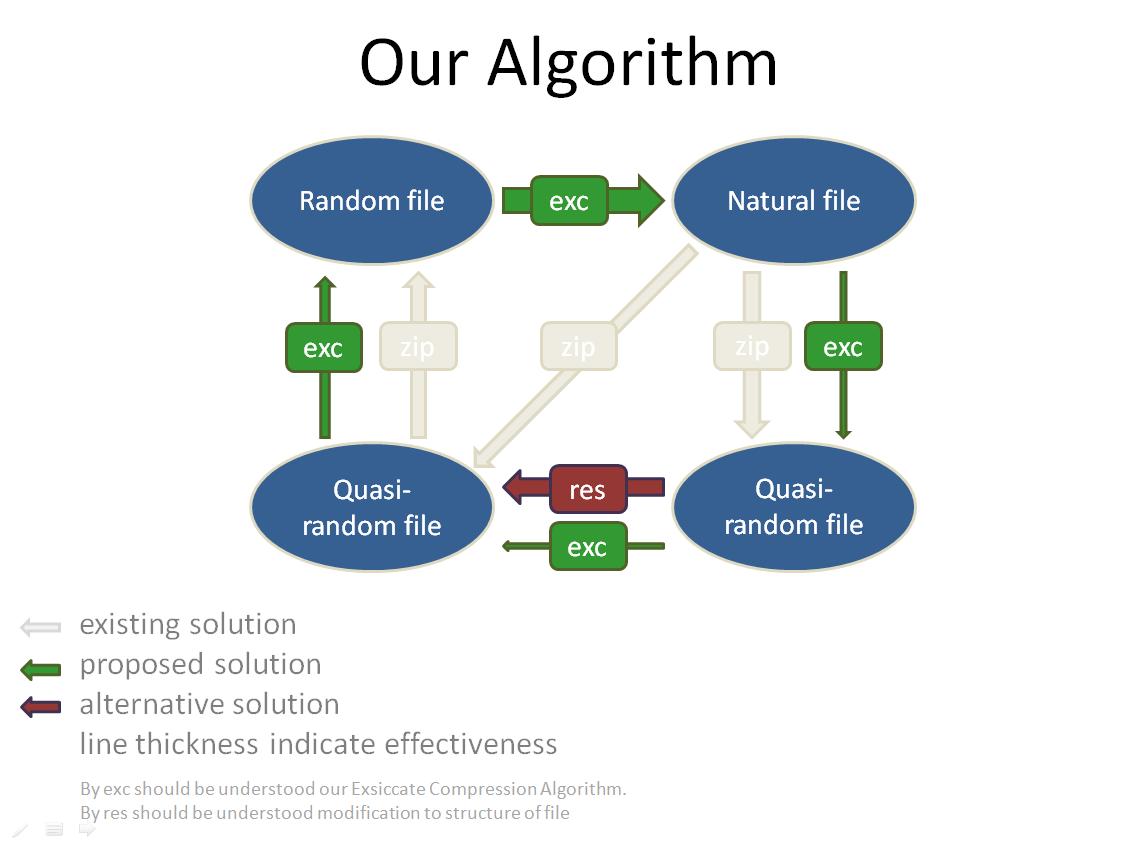You would like to know: "How it works?" wouldn't you? If so, you are in the right place. The answer for the question is simple. I mean the answer is: "The answer is simple". Let’s take a look at the example.
At the beginning, one thing has to be taken into consideration: what happens, if you try to use non-Exsiccate program to reduce volume size of the file? Only lossless compression has been analyzed.
Of course, many different programs can be used to compress files. All tests were prepared with this or that software, all free software, and it does not have any significant influence on the results.
It is not easy to find any information about lossless recurrent compression, actually about any recurrent compression. Looking for information about questions above, you can find some data about change of file size depending on file type, f.e. bmp into jpg. In one case, somebody tried compress an empty file. He did not mention: what for? So, at the beginning – it should be known, how much can be compressed with non-Exsiccate solution? Looking for the answer, Rand-O-meteR program can be used. Rand-O-meteR does not give 100% accurate answer, however it is a good point to start.
Please, take a look at the graph below (click to open in a new window).
The general "map" of possibilities. It can be easily noticed, that two quasi-random files appear. The main difference is - only one of them can be compressed providing smaller volume size. That can be explained by different content of the files – different randomness of the files. These differences lead to another, much more important conclusion.
In general our program can be used to compress files multiple times – recurrent compression. Below you can find some estimate values, describing, what should be understood by effectiveness. If natural file is a typical text file (.txt), it can be compressed to ~12% of volume size after using non-Exsiccate software. Exsiccate can compress file to ~99% of the volume on the first run. Non-Exsiccate program can be used once more and provided ~101% volume size of the file. Exsiccate can compress file again to ~99%. That means Exsiccate need to be used 90 times to provide the same effect as using once non-Exsiccate. However, the fun part is - if considered file type is .jpg or .zip, using non-Exsiccate software, compression cannot be reached - ~101% volume size of the file.
The conclusion is – no matter what type of file is compressed, downsizing of the file is always provided.
Two more things need to be clarified. The first thing has been presented above with the alternative solution (called by us "res"). More information can be found on page describing in details res’ing program. The second thing is - random file is normally changed again into natural file after using "res". Nature of modified file is a little different, comparing with previous one and it can very often be compressed by non-Exsiccate program but with lower compresion ratio (on other hand exsiccate achieve compression ~95% on such files).

